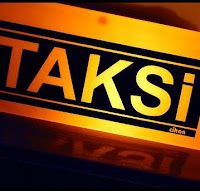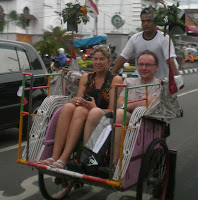At 1,919,440 square kilometers (741,050 sq mi), Indonesia is the world's 16th-largest country in terms of land area. Its average population density is 134 people per square kilometer (347 per sq mi), 79th in the world, although Java, the world's most populous island, has a population density of 940 people per square kilometer (2,435 per sq mi). At 4,884 metres (16,024 ft), Puncak Jaya in Papua is Indonesia's highest peak, and Lake Toba in Sumatra its largest lake, with an area of 1,145 square kilometers (442 sq mi). The country's largest rivers are in Kalimantan, and include the Mahakam and Barito; such rivers are communication and transport links between the island's river settlements.
Indonesia's location on the edges of the Pacific, Eurasian, and Australian tectonic plates makes it the site of numerous volcanoes and frequent earthquakes. Indonesia has at least 150 active volcanoes, including Krakatoa and Tambora, both famous for their devastating eruptions in the 19th century. The eruption of the Toba supervolcano, approximately 70,000 years ago, was one of the largest eruptions ever, and a global catastrophe. Recent disasters due to seismic activity include the 2004 tsunami that killed an estimated 167,736 in northern Sumatra, and the Yogyakarta earthquake in 2006. However, volcanic ash is a major contributor to the high agricultural fertility that has historically sustained the high population densities of Java and Bali.
Lying along the equator, Indonesia has a tropical climate, with two distinct monsoonal wet and dry seasons. Average annual rainfall in the lowlands varies from 1,780–3,175 millimeters (70–125 in), and up to 6,100 millimeters (240 in) in mountainous regions. Mountainous areas—particularly in the west coast of Sumatra, West Java, Kalimantan, Sulawesi, and Papua—receive the highest rainfall. Humidity is generally high, averaging about 80%. Temperatures vary little throughout the year; the average daily temperature range of Jakarta is 26–30 °C (79–86 °F).
The nation of Indonesia is almost unimaginably vast: More than 17,000 islands providing 108,000 kilometers of beaches. The distance between Aceh in the West and Papua in the East is more than 4,000 kilometers (2500 miles), comparable to the distance between New York City and San Francisco. Laying on the western rim of the Ring of Fire Indonesia has more than 400 volcanoes, of which 130 are considered active, as well as many undersea volcanoes. The island of New Guinea (on which the Indonesian province of Papua is located) is the second largest island in the world. Provinces are usually grouped around larger islands and include smaller surrounding islands. The listing below follows this practice, except with Bali which is treated as a separate region in here.
| Sumatra (incl. the Riau Islands and Bangka-Belitung) Wild and rugged, the 6th largest island in the world has a great natural and cultural wealth with more than 40 million inhabitants. Habitat to many endangered species. |
| Kalimantan (Borneo) The vast majority of this, the world's third largest island, is covered by the Indonesian province. Uncharted jungles, mighty rivers, home of the orangutan, a paradise for the adventurer. |
| Java (and Madura) The country's heartland, big cities including the capital Jakarta, and a lot of people packed on a not-so-big island. Also features the cultural treasures of Yogyakarta, Borobudur and Prambanan. |
| Bali By far the most popular visitor destination in Indonesia, Bali's blend of unique culture, legendary beaches, spectacular highland regions and unique underwater life make it a perennial favourite amongst global travellers. |
| Sulawesi (Celebes) Strangely shaped, this island houses a diversity of societies and some spectacular scenery, Toraja culture, rich flora and fauna, world class diving sites. |
| Nusa Tenggara (Lombok including the Gili Islands, Sumbawa, Flores, Komodo and West Timor) Also known as the Lesser Sunda Islands, the "Southeast Islands", contain scores of ethnic groups, languages and religions, as well as Komodo lizards and more spectacular diving. |
| Maluku (Moluccas) The historic Spice Islands, fought over to this day, largely unexplored and almost unknown to the outside world. |
| Papua (Irian Jaya) The western half of the island of New Guinea, with mountains, forests, swamps, an almost impenetrable wilderness in one of the remotest places on earth. |








